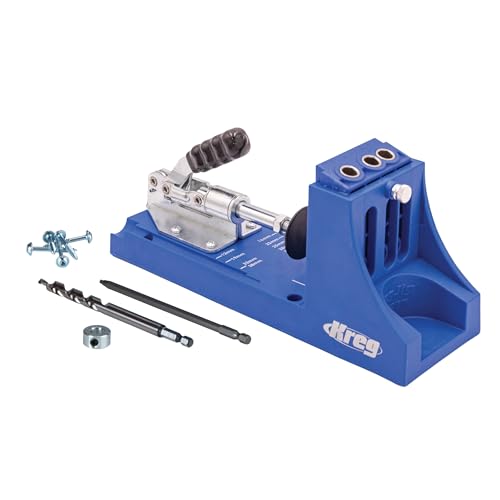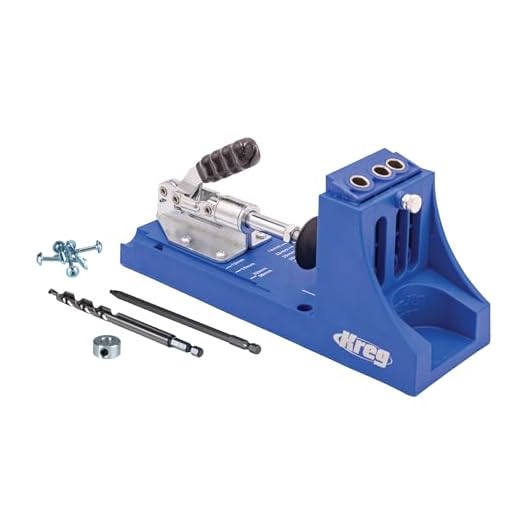


Woodworking is a timeless craft that has been practiced for centuries. One of the most essential skills for any woodworker is the ability to create strong and durable wood joints. These joints not only add stability to your projects but also enhance their aesthetic appeal.
A table saw is a versatile tool that can be used to create a wide variety of wood joints. Whether you are a seasoned woodworker or just starting out in the craft, learning how to make wood joints with a table saw is a skill that will greatly benefit you.
There are several types of wood joints that can be made using a table saw, including dado joints, rabbet joints, and finger joints. Each joint has its own unique method of construction and provides different strengths and benefits.
In this article, we will guide you through the step-by-step process of making wood joints with a table saw. We will cover the tools and materials you will need, as well as the techniques required to create each type of joint. So, grab your table saw and let’s get started on mastering the art of wood joinery!
What Are Woodworking Joints?
Woodworking joints are essential connections between two or more pieces of wood that create solid and lasting structures. These joints play a crucial role in joining wood together, providing strength, stability, and functionality to various woodworking projects.
There are numerous types of woodworking joints, each designed to serve a specific purpose and achieve a particular connection. Some common woodworking joints include:
1. Butt Joint: A simple and basic joint where the end grain of one piece of wood is joined to the face grain of another piece.
2. Dovetail Joint: An interlocking joint known for its strength and durability, often used in drawer construction.
3. Mortise and Tenon Joint: A versatile joint that involves inserting a square or rectangular projection (tenon) on one piece of wood into a corresponding hole (mortise) in another piece.
4. Tongue and Groove Joint: A joint where a tongue-shaped projection on one piece fits into a groove on another piece, creating a tight and flush connection.
5. Mitre Joint: A joint formed by cutting two angled ends, usually 45°, which align to form a 90° corner.
6. Rabbet Joint: A joint where a groove is cut into the edge or end of a piece of wood to allow another piece to fit into it, creating a flush connection.
These are just a few examples of the many woodworking joints available to woodworkers. The choice of joint depends on the project’s requirements, the type of wood being used, and the desired aesthetic appeal.
Creating these joints often requires precise measurements, accurate cuts, and careful assembly. A table saw is a versatile and useful tool that can help in creating various woodworking joints, providing the necessary precision and control.
Understanding the different types of woodworking joints and how to make them using a table saw can greatly enhance your woodworking skills and open up a world of creative possibilities.
Why Are Woodworking Joints Important?
Woodworking joints are an essential part of any woodworking project. They are designed to connect two or more pieces of wood together, creating a strong and durable joint that can withstand pressure and stress. Woodworking joints play a vital role in ensuring the structural integrity of furniture, cabinets, and other wooden objects.
Here are several reasons why woodworking joints are important:
- Strength: Properly constructed woodworking joints can significantly increase the strength and stability of a piece. By interlocking the wood fibers, joints distribute the load more evenly, preventing the wood from splitting or breaking.
- Durability: Quality joints make a piece of furniture or wooden object more durable by reinforcing weak spots and minimizing the risk of damage or failure over time. A well-built joint can withstand years of use and movement without loosening or separating.
- Aesthetics: Joints can also enhance the visual appeal of a woodworking project. With a variety of joint designs available, craftsmen have the flexibility to create unique and decorative features that add character and sophistication to their work.
- Functionality: Woodworking joints determine how different pieces of wood come together, enabling the creation of complex structures and allowing specific movements or functions. Whether it is a door hinge or a drawer slide, well-executed joints ensure smooth operation and maximum functionality.
It is important to choose the right woodworking joint for each project, considering factors such as the type of wood, the load it will bear, and the desired aesthetics. Common woodworking joints include dado joints, mortise and tenon joints, finger joints, and dovetail joints, each having its own strengths and applications.
Mastering the art of woodworking joints requires practice, precision, and attention to detail. A high-quality table saw is a valuable tool for creating accurate cuts and achieving snug-fitting joints. By using appropriate techniques and tools, woodworkers can produce strong, durable, and visually appealing joints that elevate the quality of their craftsmanship.
Types of Woodworking Joints
Woodworking involves creating strong and durable connections between pieces of wood to construct various structures. There are several types of woodworking joints that are commonly used in furniture making and other woodworking projects:
1. Butt Joint: This is the simplest and most basic joint where two pieces of wood are joined together by simply butting them against each other. It is often reinforced with screws or nails for added strength.
2. Miter Joint: In this joint, two pieces of wood are cut at a 45-degree angle and joined together to form a right angle. It is commonly used for making frames and picture corners.
3. Dado Joint: This joint involves cutting a groove or slot into one piece of wood and fitting another piece into it. It is commonly used for shelving and cabinetry.
4. Mortise and Tenon Joint: This joint is used for joining pieces of wood at a 90-degree angle. The tenon, a protruding piece, is inserted into a corresponding hole, called a mortise, in the other piece. It is widely used in furniture making.
5. Dowel Joint: In this joint, a hole is drilled into both pieces of wood and a dowel pin is inserted to hold them together. It provides a strong and invisible joint.
6. Box Joint: This joint is created by interlocking rectangular or square “fingers” cut in the ends of two pieces of wood. It is commonly used for making boxes and drawers.
7. Dovetail Joint: Widely regarded as one of the strongest and most beautiful woodworking joints, the dovetail joint involves joining two pieces of wood with interlocking “tails” and “pins” cut at an angle.
8. Tongue and Groove Joint: This joint consists of a “tongue” that fits into a corresponding “groove” in another piece of wood, creating a flush and strong connection. It is commonly used for flooring, paneling, and joining boards.
These are just a few examples of the many woodworking joints that can be created using various tools and techniques. Each joint has its own unique characteristics and applications, and choosing the right joint for your woodworking project is crucial for ensuring a strong and visually pleasing final result.
How to Make Wood Joints with the Table Saw
Woodworking enthusiasts often rely on the table saw for making precise and strong wood joints. Whether you are working on a DIY project or a professional woodworking task, the table saw can be an indispensable tool for creating various types of joints.
Key Tips:
1. Safety First: Before starting any woodworking project, make sure to wear appropriate safety gear, such as safety goggles, ear protection, and gloves. Familiarize yourself with the table saw’s safety features and always follow proper safety procedures.
2. Choosing the Right Blade: Selecting the correct blade for the type of joint you want to make is crucial. For most wood joints, a general-purpose combination blade or a dedicated dado blade set can be suitable.
3. Measuring and Marking: Accurate measurements and markings are essential for achieving precise wood joints. Use a tape measure, marking gauge, or a combination square to mark the necessary dimensions on the wood pieces.
4. Rip Cutting: To create a basic joint, such as a butt joint or a lap joint, start by ripping the wood pieces to the desired width using the table saw. Adjust the rip fence and guide the wood piece along the fence to ensure a straight and consistent cut.
5. Crosscutting: For joints like miter joints or finger joints, you will need to make precise crosscuts on the wood pieces. Utilize a miter gauge or a crosscut sled to guide the wood across the table saw’s blade and achieve accurate angled or perpendicular cuts.
6. Dado or Rabbet Cuts: Dado and rabbet joints are commonly used for joining shelves, drawers, or cabinet parts. With a dado blade or a properly set up stacked dado set, you can easily create notches or channels on the wood pieces to interlock them securely.
7. Fine-tuning: After making the necessary cuts, use sandpaper or a plane to refine the joints and ensure a tight fit. This extra step will enhance the overall strength and appearance of the joints.
8. Gluing and Clamping: Apply woodworking glue to the joint surfaces and assemble the pieces together. Utilize clamps to apply consistent pressure and allow the glue to dry completely before removing the clamps.
By following these steps and practicing proper woodworking techniques, you can consistently create strong and durable wood joints using a table saw. Always remember to take your time, work safely, and continuously refine your skills to achieve high-quality results.







